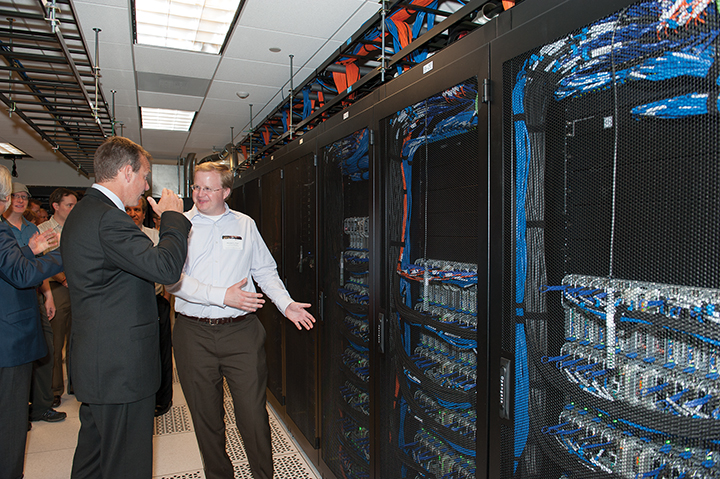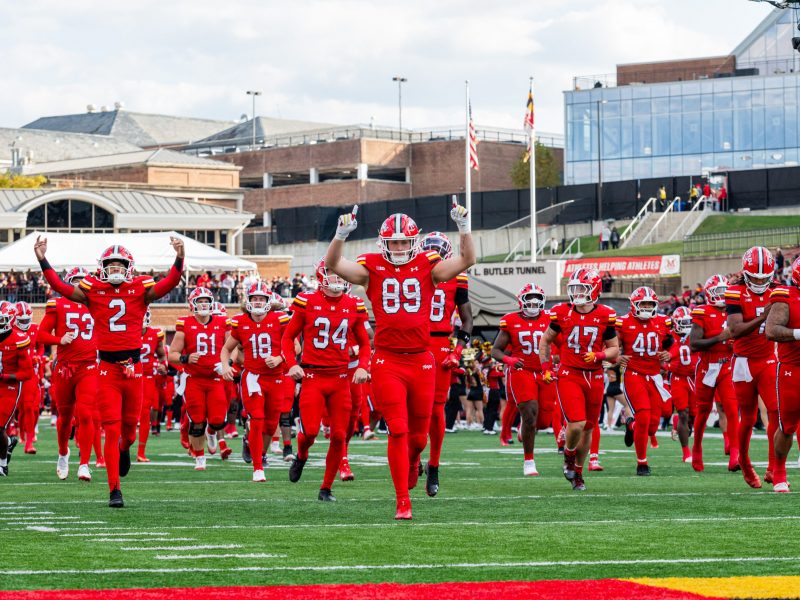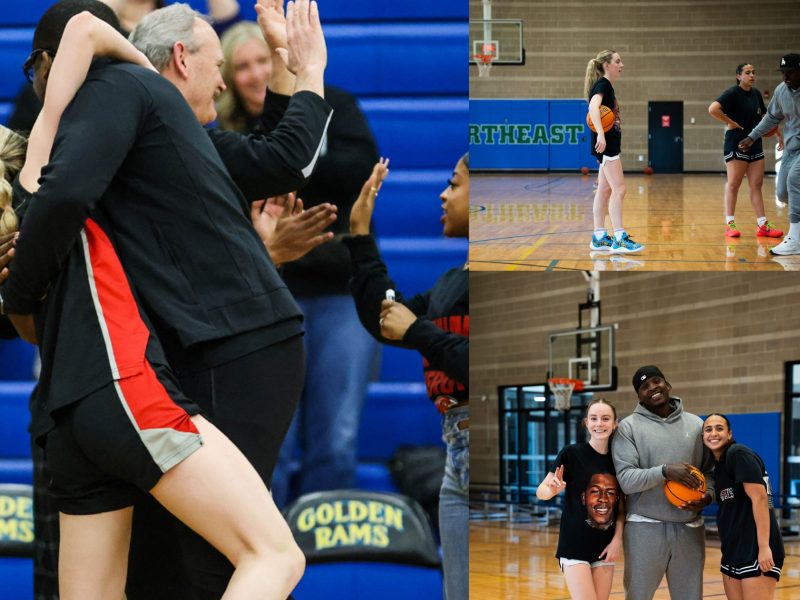
Deepthought2
A new supercomputer developed at this university will allow researchers to analyze everything from combustion to particles in the rings of Saturn.
After nearly 10 years of planning and two years of construction, university officials introduced the $4.2 million Deepthought2 supercomputer and the new 9000-square-foot Cyberinfrastructure Center that houses it to a crowd of several dozen researchers, faculty and consultants yesterday.
“This is a great day, and it’s an awesome computer,” university President Wallace Loh said before cutting the ribbon to open the new center, which will be located in the Rivertech Building of the university’s M Square Research Park. “It’s awesome. I’m speaking like a teenager because I just learned what a supercomputer can do.”
With the computational power of 10,000 laptops, Deepthought2 can run tests and analyze data too large for normal computers to handle, said Fran LoPresti, deputy chief information officer for cyberinfrastructure and research information technology for the Division of Information Technology.
“This is 2,000 times the storage of a laptop and 50 the connection of any home broadband,” she said.
The Deepthought2 is about 30 feet by 7 feet by 4 feet and gets its name from the supercomputer designed to discover the meaning of life in Douglas Adams’ novel The Hitchhiker’s Guide to the Galaxy.
Researchers said they will begin to use it in June. It succeeds the Deepthought, a smaller supercomputer that has been used since 2006.
The newer supercomputer is 10 times faster than the first Deepthought, with an estimated ability to perform between 250 and 300 trillion operations per second, according to a DIT news release.
About 200 researchers used the original Deepthought, but LoPresti expects the new machine will accommodate more than 1,000 researchers in the next year, including professors, graduate students and undergraduates.
Vivien Lecoustre, a researcher at this university, said he previously exported his data to supercomputers across the country when researching fire protection engineering. But with the new supercomputer, he said, his research will be much easier in the future.
“It’s what drives us,” he said. “If we can have more access, we can complete more computations and do more research. Everybody is very excited, and it puts the university on the map, too.”
Derek Richardson, an astronomy professor, said he plans to use Deepthought2 for his work with granular dynamics problems.
He is researching particles in the rings of Saturn, which have structures that are not yet understood. To study them, he collects and analyzes data on millions of particles.
“For that, you need a lot of computations and a lot of data,” Richardson said. “You need a supercomputer for that.”
The university will also use Deepthought2 as a teaching tool, said Ann Wylie, interim vice president for information technology, who noted classes will be offered to undergraduates to learn how to use a supercomputer.
“It’s important to not limit this to research, but also to teach from it, since we are a teaching institution,” Wylie said.



